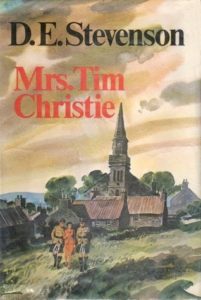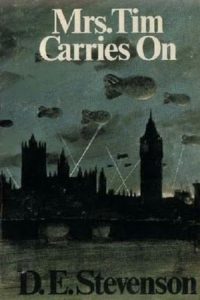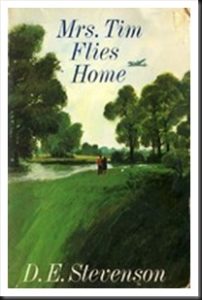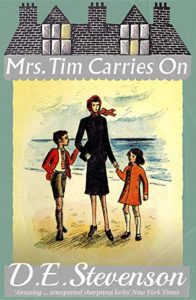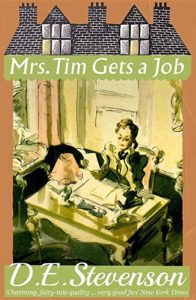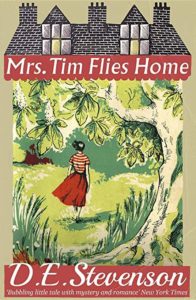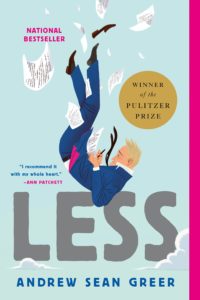The Language of Food by Dan Jurafsky
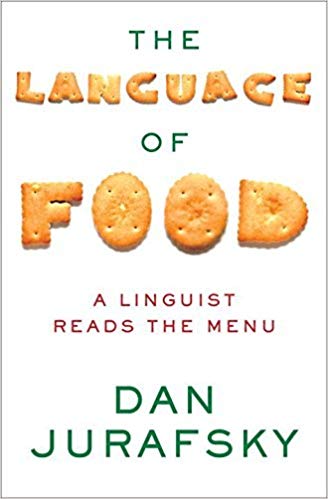 The Language of Food A Linguist Reads the Menu
The Language of Food A Linguist Reads the Menu
by Dan Jurafsky
Fellow foodie friends loaned me this book. We share a love of cookbooks, cooking and seeking out new foods — but they touted it as a completely different type of food book ~~ The Language of Food is just that – like nothing you’ve ever read.
Written by a professor of linguistics and computer science at Stanford University, Mr. Jurafsky (and his team) devoted many (many) hours exploring the origin of food terminology — from food names to the nuances of menu writing — and happily melded it all with computerized linguistic tools to evolve the genesis of this book.
Whoa, I first thought — way above my mental pay grade, but I was instantly fascinated by the introduction, in which the author explains his fascination with food linguists and how it involves the science, history, and culture of many regions. He explains the origin of ‘ketchup’ which derives from a pungent Chinese fermented fish sauce pronounced ke-tchup in Cantonese. This sauce was brought back to Europe by English and Dutch explorers and evolved over 400 years to suit Western tastes and become today’s ubiquitous tomato based condiment. Macaroni descends from a Persian almond pastry which intermingled with the pastas of the Arabs to become pasta. And toasts at weddings historically involved toasted bread.
The first chapter of The Language of Food is devoted to menus and their language. You will both chuckle and be struck at restaurant menu manipulation Back in the 1970’s the use of French denoted expensive and swanky meals – such as ‘Fried Chicken a la Maryland’ or ‘Ravioli en casserole’. Today fancy restaurants do the same thing with often ridiculous descriptions of the origins of the food — grass fed, pasture raised, green market cucumbers (this is especially rampant here on the West Coast and was lampooned in a very funny episode on Portlandia — watch clip HERE.)
But I digress…
Restaurant price points are so ingrained in their menu language that we’re not even aware of it (at least it never occurred to me before). Expensive restaurants use ‘chefs daily selection’ or set prix-fixe menus. In contrast, cheaper places give the diner a lot of choice – not only do they have far more dishes, they also prepare meals to your liking ‘prepared your way’. In fact Mr. Jurafsky points out that the words ‘you’ and ‘your’ appear much more often in cheaper restaurants. And what about middle-priced places? — well they tend to use lots of adjectives such as this mouth watering description of an apple pie:
Rustic Apple Galettte: Hand crafted tart in five inches of butter flaky french puff pastry. We layer fresh ripe apples and bake to a golden brown.
I’ll leave this menu chapter now, but not before I point you to something mentioned which I almost missed – the NY Public Library Menu Collection. I had great fun wasting time one rainy evening. Just take a look and click on some of these wonderful old menus that have been digitally preserved – such as from ocean liners back in the early 1900’s or you can enter a favorite restaurant from your memory and there it is. Such fun.
Okay back to the book.
Sex, Drugs, and Sushi Rolls is an eye-opening chapter on the power of language in restaurant reviews – and how reviewers often use words connected to sex or drugs to hype — such as ‘the chicken wings are addicting’ or ‘the ice cream pastry was just orgasmic’. Perhaps most interesting was the scientist’s investigation into often rigged on-line reviews (such as Yelp) which can sadly bring down a perfectly good restaurant.
In other chapters, you’ll get to read about junk food marketing and how advertising copy got us to crave potato chips and kettle corn at festivals. You’ll learn why the Chinese don’t have dessert and how today’s group cooking/dinner parties evolved from cooking clubs in a mouth watering region in Basque.
I think it comes with the territory, that a food linguist/computer scientist can and will get pedantic. So I must admit I didn’t entirely get through each and every chapter, but I did read quite a bit more of this book than I originally thought I would – (see Mental Pay Grade above…)
The Language of Food is sometimes geeky but more often actually quite fascinating, and I applaud Mr. Jurafsky for devoting so much effort to bring us such delightful insight into the language, history, culture and origins of our food and eating experiences.
I’m off to make our dinner and it’s definitely going to be chefs choice…. 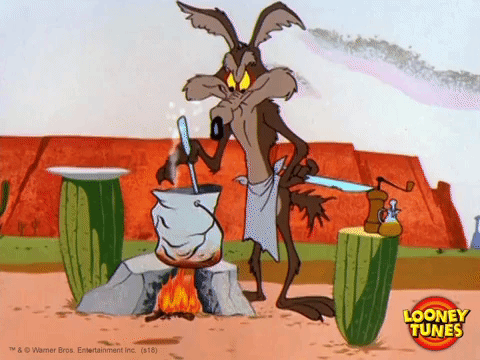
Mrs. Tim Series
Back in the 70’s I discovered a copy of Mrs. Tim in a used book store — the war-time diary of the delightful Hester Christie—or ‘Mrs. Tim’ as she is called after her officer husband. The author, D.E. Stevenson, based this series from her own wartime diaries:
There is so much War News in News Bulletins, in Newspapers, and so much talk about the war that I do not intend to write about it in my diary. Indeed my diary is a sort of escape from the war . . . though it is almost impossible to escape from the anxieties which it brings.
I was so enthralled with Mrs. Tim’s daily happenings. I quickly found more in the series, and read them all with sighs of happiness. We see the war through the diary of this delightful wife and mother, her husband away at war, coping with domestic battles of her own. Mrs. Tim carries on with humor, wit, and a bit of snark.
There’s the daily routines of collecting gloves for soldiers overseas, making do with wartime rationing, and adjusting to an influx of Polish refugees. But Mrs. Tim also deals with an unwanted suitor, deftly handles a self important Air Raid Warden, and moving house. She tries to mask her fear when her husband goes missing in war-torn France, and shows bravery encountering a downed German aircraft (while shooting grouse in the Scottish countryside no less!). A rich aunt visits with inappropriate gifts and unwanted judgements, the cook is always in a bad temper, and she wrestles with a cranky old car.
So there you have it. A brave woman making a life during WWII.
Quietly fascinating domestic drama.
My old copies still live on my copious bookshelves — battered, worn, and with cracked spines. They’re written in diary format, so over the years I’ve found it easy and comforting to open a copy, at any place, to visit with Hester for a day.
Enter Scott over at Furrowed Middlebrow. An extraordinary fellow, with a keen interest in documenting and publishing largely forgotten British women writers from the early to mid-twentieth century. As a result, he launched Dean Street Press which has a delightful list of titles with sigh-worthy and (warning) very tempting covers.
And look what they’ve done — Dean Street press have just reprinted the Mrs. Tim series .
Just look at these covers — the artwork is lovingly reproduced from early editions.
Dean Street Press (and Scott) kindly sent me the digital edition of Mrs. Tim Carries On so I could talk about it here. I re-read it on my Kindle during the past few rainy days/nights and it still delights.
If you haven’t read D.E. Stevenson, be sure get yourself a couple of these beauties. This new edition of Mrs. Tim Carries On has a wonderful introduction by Alexander McCall Smith which will give you background on Mrs. Tim and D. E. Stevenson.
It’s awfully nice sometimes to treat yourself to fine books which, if you’re like me, you’ll enjoy and re-read for many years to come.
I may just join you – I keep sighing over those covers and isn’t it time to upgrade my broken old copies?
(Rationalizing is my own special super power.) 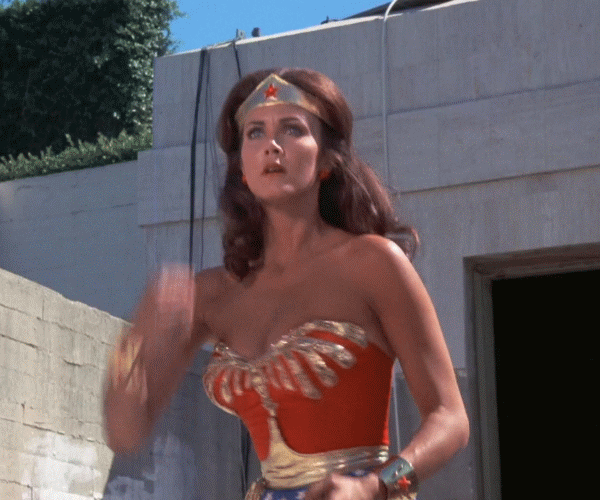
Less by Andrew Sean Greer
I’ve decided I need to venture out of my safety zone and read more widely acclaimed books. You know, those books getting media attention, the runners-up, and the actual prize winners. Don’t get me wrong, I often read notable books and have reviewed them here – but the experiences are often checkered.
Less won the Pulitzer Prize for fiction in 2018
Here, all this time, Less thought he was merely a bad writer. A bad lover, a bad friend, a bad son. Apparently the condition is worse; he is bad at being himself.
One day Less receives a wedding invitation — his younger lover from his latest long term relationship is getting married to an equally younger man. He can’t go, he just can’t, so he books himself on a trip around the world. He goes through his stack of pleas for his attendance at various writers conferences, teaching assignments, interviews, publicity junkets and cobbles together an exotic itinerary. These are not big name events, but those offered to middle tier authors — many are unpaid, some will pay only his expenses. It matters not to Less, he can now legitimately reply to the wedding invitation saying he will be out of the country at the time of the dreaded wedding.
And so off we go with Less to Mexico, Morocco, Berlin, Japan, India – a sort of Eat Pray Love journey filled with typically uncomfortable ‘Lessian’ travails. (Side-note: Less believes he speaks fluent German and his translated conversations had me giggling out loud, knowing that’s how I must sound when I speak my long-studied-but-never-mastered French.)
There, I’ve told you about the basic plot of this slim novel, but wait — wait there’s so much more.
You may have to barrel through the first few chapters — this is where Mr. Greer’s writing feels a bit uneven and disconnected — I almost gave up, but happy I didn’t. By the time you (and Less) are in Morocco — the writing meshes and starts to soar.
The prose goes from being sharp and insightful ~~
“Strange to be almost fifty, no? I feel like I just understood how to be young.” “Yes! It’s like the last day in a foreign country. You finally figure out where to get coffee, and drinks, and a good steak. And then you have to leave. And you won’t ever be back.”
His brain sits before its cash register again, charging him for old shames as if he has not paid before.
~~ to poignant
How can so many things become a bore by middle age — philosophy, radicalism, and other fast foods — but heartbreak keeps its sting?
…the time when any couple has found its balance, and passion has quieted from its early scream, but gratitude is still abundant; what no one realizes are the golden years.”
~~ and this gets my nomination for best sentence ever:
He kisses—how do I explain it? Like someone in love. Like he has nothing to lose. Like someone who has just learned a foreign language and can use only the present tense and only the second person. Only now, only you.
Not gay, you say, well neither am I– but no matter who you are, you’ll recognize a little (or a lot) of Less in yourself. As he travels he tries to write but instead muses back his life, his loves, his mistakes – all the regrets. Mr. Greer, himself gay, has written a humorous yet gentle novel all about the all-too-human fear of aging, and discovering that middle-age can bring grace and even love.
I won’t give away the ending, but let it be said – I cried…
A digital review copy was kindly provided by Hachette Book Group via NetGalley
—————————————-
As much as I enjoyed Less, I wondered about this slim, comic novel’s qualifications to win the Pulitzer and did some research – turns out Pulitzer’s guidelines are amazingly loose.
The winning book, be it a novel or short-story collection, must have been written by an American, and should, ideally, be in some way about American life.
HERE’S a list of other Pulitzer prize winning fiction. Still not sure it ranks up there with some of the others I’ve read, but then again, no one asked me to be a judge.
And, as Less learns it’s pronounced PULL-it-sir, not PEW-lit-zer.
Rosamunde Pilcher
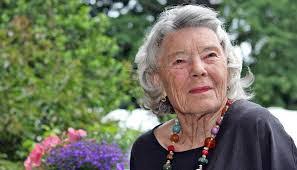 Rosamunde Pilcher, one of my favorite authors has died at 94. Ms. Pilcher had been writing short stories and novels for years, first under a pen name and then under her own, when The Shell Seekers, published in 1987, elevated her to a new level of sales and fame.
Rosamunde Pilcher, one of my favorite authors has died at 94. Ms. Pilcher had been writing short stories and novels for years, first under a pen name and then under her own, when The Shell Seekers, published in 1987, elevated her to a new level of sales and fame.
Her books are a solace — especially made for those bruised and weary days. Very British, her character driven stories of gentle love, flawed families and steadfast friends have pitch-perfect dialogue and beautifully rendered settings.
She worked for the foreign service during the war, married an officer, and wrote while raising her young children in Scotland. In one interview Ms. Pilcher related an anecdote from her days as a fledgling novelist with young children.
“I always practice my dialogue out loud,” she said. “Once, when Fiona was small, she had a friend over, and I was hanging up the washing and running through my dialogue. Her friend said, ‘Look, your mummy’s lips are moving.’ And Fiona said: ‘Don’t be stupid. She’s writing.’ ”
More than 60 million copies of her books have been sold around the world and there are special tours run in Cornwall, taking busloads of tourists to the locations in her books.
Ms. Pilcher’s books live on a high shelf in my bedroom with my other favorite comfort reads. She retired from writing with her final book, Winter’s Solstice. It’s a cold, rainy and blustery day – I think I’ll go find my copy and snuggle in.
HERE’S the list of all her books, readily available in any library.
Flower Drum Song
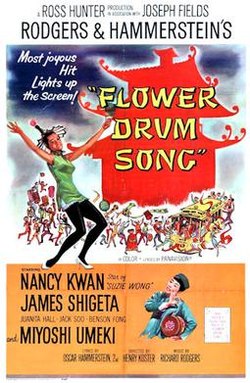 Tuesday was Chinese New Year and while it may not be a major holiday where you are — it’s a full multi-week celebration here in San Francisco. Our Chinese-American friends are feasting, enjoying family reunions, exchanging lucky money in traditional red envelopes, and oranges festoon every table.
Tuesday was Chinese New Year and while it may not be a major holiday where you are — it’s a full multi-week celebration here in San Francisco. Our Chinese-American friends are feasting, enjoying family reunions, exchanging lucky money in traditional red envelopes, and oranges festoon every table.
Because of the holiday, our local television station aired Flower Drum Song late the other night, and I donned my PJ’s to stay up to watch the film. This musical has a special place in my heart. I was seven years old and it was one of the first films I saw in a real movie theater with my family. I was totally smitten by its dancing, music, its depiction of Chinese-Americans and the scenes of San Francisco made a big impression upon me. It seemed a magical city and it’s no coincidence it became my home.
And while the current film Crazy Rich Asians is getting kudos for its Asian casting — 60 years ago, Rodgers and Hammerstein’s Flower Drum Song broke this ground by being one of the first films to ever feature a largely Asian cast.
Now that I’ve lived here in San Fransisco for more than 35 years, the grown up part of me cringed at the stereotypical portrayal of Chinese-Americans and the simplistic view of the immigrant experience. But, for many in 1961, this film was their first exposure to the Chinese-American culture.
But I soon let go of my adult hang-ups and by the second musical number I was once again delighted. Flower Drum Song is not considered to be one of Rodgers and Hammerstein’s best, it actually lost money at the box office, but it’s one of my favorite musicals. Dated yes — but the colors, the dancing, the costumes, the scenery, and music still transport me back to my seven year old delight.
For its time, it had some breakthrough special effects — the I enjoy being a girl segment has a three way mirror segment that is pure fancy. Here’s where the 60’s ideals of femininity really shine with the beautiful Nancy Kwan in her absolute prime.
The musical dabbles in the avaunt guard dance techniques of the time, with some especially energetic dance segments by a very young Patrick Adiarte who you may recognize from MASH episodes.
The interior sets are pure 60’s fun and there are some pretty realistic (yet Hollywood-recreated) scenes of Chinatown and San Francisco. Jack Soo is so endearing in his Don’t Marry Me segment. Just look at that face and try not to laugh when he begs — if you want to have attractive children — don’t marry me! It was great to see the interspersed film clips of our Chinese New Year’s parade — largely unchanged to this day and still part of our city’s celebrations.
Flower Drum Song is a light and lively musical, with all the classic elements: an enchanting plot, a wonderful sound track, exotic sets, and a nostalgic glimpse into 1960’s San Francisco. A fun choice for an evening’s entertainment.
If you have Amazon prime, you can stream/watch it anytime – until then
Gong Hei Fat Choy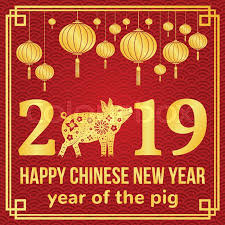
Once Upon a River by Diane Setterfield
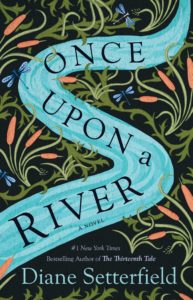 Once Upon A River
Once Upon A River
by Diane Setterfield
Ms. Setterfield’s The Thirteenth Tale is one of my all-time favorite novels – it holds a place of honor on my shelf, so I was excited to receive an advance reading copy of her newest novel, Once Upon A River.
What a journey I’ve been on, what a tale I’ve been told. Pull up a chair here by the fire and let me tell you more
It was solstice night, the longest night of the year… And as the borders between night and day stretch to their thinnest, so too do the borders between worlds… Unexpected things can happen. Did the solstice have anything to do with the strange events at the Swan? You will have to judge for yourself.
The novel opens on the winter solstice of 1887 at The Swan, a pub on the Thames River in England. The Swan is where drinking patrons gather to tell and hear stories. The stories are suddenly interrupted by the appearance of a badly injured stranger at the door, carrying a dead little girl. When the child, who had no signs of life, hours later begins to breathe again, everyone wonders who or what she is. A miracle? A river sprite? A magic being? Who is the injured man, not the father, but carrying the little girl? Whatever she may be, once revived, three different people claim her as their own lost little girl.
But in describing the basic premise, I am short shifting Once Upon a River. This is a rich and complex novel. A lyrical fairy tale steeped in the art of story telling and painted with its river setting symbolism. I was completely enveloped in this fascinatingly entwined story of the little girl, the mysterious injured man, the families, and the various patrons who witnessed the miracle. Like any good fairy tale, we’re never sure what’s myth or reality. A woman with an patch over an eye that has the power to see deep into people’s souls and there’s Quietly – the river’s mythical guardian who watches over all who cross or boat upon it.
Don’t be put off by the size of this novel – it’s a chunkster – but Ms. Setterfield has carefully woven the stories together so that you’re eager to visit with each character to hear their side of the story — their version of the history. The stories swirl along the river and back and forth in time. The river itself, the Thames, is not just a setting, it serves both as character and metaphor — the reader and the story follow its twists, ebbs and flows — straining to see what’s around the next bend…
It finds its way into wells and is drawn up to launder petticoats and be boiled for tea. It is sucked into root membranes, travels up cell by cell to the surface, is held in the leaves of watercress that find themselves in the soup bowls and on the cheeseboards of the county’s diners. From teapot or soup dish, it passes into mouths, irrigates complex internal biological networks that are worlds in themselves, before returning eventually to the earth via a chamber pot. Elsewhere the river water clings to the leaves of the willows that droop to touch its surface and then, when the sun comes up, a droplet appears to vanish into the air, where it travels invisibly and might join a cloud, a vast floating lake, until it falls again as rain. This is the unmappable journey of the Thames.
Admittedly, there are lots (and lots) of characters, but even this poor old brain was able to keep them straight – a testament to the writing. Ahhh, the writing – Ms. Setterfield is the master chef of storytelling — mixing folklore into a mystery and sprinkling in some magical happenings. I found it impossible to rush this novel — and fair warning, some may find it tedious — but not I. I deliberately slowed down my usual rapid reading to savor many beautiful sentences…such as this:
They were collectors of words the same way so many of the gravel diggers were collectors of fossils. They kept an ear constantly alert for them, the rare, the unusual, the unique
and this:
There are stories that may be told aloud, and stories that must be told in whispers, and there are stories that are never told at all.
Once Upon a River had me spellbound for days (and nights). Ms. Setterfield shows the import of stories to shape and define lives. How stories change the past, hide secrets, form resentments, teach us how to love and be loved — and in the end, to flourish as humans.
I’ll leave you with this from the ending (and a recommendation to also read The Thirteenth Tale):
And now, dear reader, the story is over. It is time for you to cross the bridge once more and return to the world you came from. This river, which is and is not the Thames, must continue flowing without you. You have haunted here long enough, and besides, you surely have rivers of your own to attend to?
A digital advanced readers copy was kindly provided by Atria Books via Netgalley.


